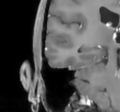Difference between revisions of "Documentation/Nightly/Modules/AnomalousFilters"
Acsenrafilho (talk | contribs) |
Acsenrafilho (talk | contribs) |
||
| Line 1: | Line 1: | ||
| − | + | <noinclude>{{documentation/versioncheck}}</noinclude> | |
| − | + | <!-- ---------------------------- --> | |
| + | {{documentation/{{documentation/version}}/module-header}} | ||
| + | <!-- ---------------------------- --> | ||
| + | <!-- ---------------------------- --> | ||
| + | {{documentation/{{documentation/version}}/module-section|Introduction and Acknowledgements}} | ||
| + | {{documentation/{{documentation/version}}/module-introduction-start|{{documentation/modulename}} }} | ||
| + | {{documentation/{{documentation/version}}/module-introduction-row}} | ||
| + | This work was partially funded by CAPES, a Brazillina Finantial Agency. Information on CAPES can be obtained from the [http://www.capes.gov.br/ CAPES website].<br> | ||
| + | Author: Antonio Carlos da S. Senra Filho, CSIM Laboratory<br> | ||
| + | Contact: Antonio Carlos da S. Senra Filho <email>acsenrafilho@usp.br</email><br> | ||
| + | {{documentation/{{documentation/version}}/module-introduction-row}} | ||
| + | {{documentation/{{documentation/version}}/module-introduction-logo-gallery | ||
| + | |Image:GE-logo.png|GE | ||
| + | |Image:Itk-logo.jpg|Itk | ||
| + | |Image:NAMIC 380x463.jpg|NA-MIC | ||
| + | }} | ||
| + | {{documentation/{{documentation/version}}/module-introduction-end}} | ||
| + | |||
| + | <!-- ---------------------------- --> | ||
| + | {{documentation/{{documentation/version}}/module-section|Module Description}} | ||
| + | {{documentation/{{documentation/version}}/module-description}} | ||
Anomalous diffusion processes (ADP) are mathematically denoted by a power law in the Fokker-Planck equation, leading to the generalized form. There are several generalizations of the Fokker-Plank equation, which should give many different partial differential equations (PDEs). Here we adopt only the so-called porous media form, allowing the super-diffusive and the subdiffusive processes. <ref>Tsallis, C. (2009). Introduction to Nonextensive Statistical Mechanics: Approaching a Complex World. Springer.</ref> In porous media, channels are created promoting or blocking the flow of the density function, which has been proved to provide a suitable application on MRI filtering.<ref>Da S Senra Filho, A. C., Garrido Salmon, C. E., & Murta Junior, L. O. (2015). Anomalous diffusion process applied to magnetic resonance image enhancement. Physics in Medicine and Biology, 60(6), 2355–2373. doi:10.1088/0031-9155/60/6/2355</ref> | Anomalous diffusion processes (ADP) are mathematically denoted by a power law in the Fokker-Planck equation, leading to the generalized form. There are several generalizations of the Fokker-Plank equation, which should give many different partial differential equations (PDEs). Here we adopt only the so-called porous media form, allowing the super-diffusive and the subdiffusive processes. <ref>Tsallis, C. (2009). Introduction to Nonextensive Statistical Mechanics: Approaching a Complex World. Springer.</ref> In porous media, channels are created promoting or blocking the flow of the density function, which has been proved to provide a suitable application on MRI filtering.<ref>Da S Senra Filho, A. C., Garrido Salmon, C. E., & Murta Junior, L. O. (2015). Anomalous diffusion process applied to magnetic resonance image enhancement. Physics in Medicine and Biology, 60(6), 2355–2373. doi:10.1088/0031-9155/60/6/2355</ref> | ||
Basically, there are two different filters already implementing the anomalous diffusion process: the isotropic anomalous diffusion and anisotropic anomalous diffusion filters.<ref>Da S Senra Filho, A. C., Garrido Salmon, C. E., & Murta Junior, L. O. (2015). Anomalous diffusion process applied to magnetic resonance image enhancement. Physics in Medicine and Biology, 60(6), 2355–2373. doi:10.1088/0031-9155/60/6/2355</ref> Each of these filters were already applied on different imaging MR modalities, such as structural T1 and T2 images<ref>Da S Senra Filho, A. C., Garrido Salmon, C. E., & Murta Junior, L. O. (2015). Anomalous diffusion process applied to magnetic resonance image enhancement. Physics in Medicine and Biology, 60(6), 2355–2373. doi:10.1088/0031-9155/60/6/2355</ref>, diffusion weighted images (DWI and DTI)<ref>Senra Filho, A. C. da S., Duque, J. J., & Murta, L. O. (2013). Isotropic anomalous filtering in Diffusion-Weighted Magnetic Resonance Imaging. Conference Proceedings: Annual International Conference of the IEEE Engineering in Medicine and Biology Society. IEEE Engineering in Medicine and Biology Society. Conference, 2013, 4022–5. doi:10.1109/EMBC.2013.6610427</ref><ref>Senra Filho, A. C. da S., Simozo, F. H., Salmon, C. E. G., & Murta Junior, L. O. (2014). Anisotropic anomalous filter as a tool for decreasing patient exam time in diffusion-weighted MRI protocols. In XXIV Brazilian Congress on Biomedical Engineering (pp. 0–3). Uberlandia.</ref>, MRI relaxation T1 and T2 relaxometry<ref>Filho, A. C. da S. S., Barbosa, J. H. O., Salmon, C. E. G. S., & Junior, L. O. M. (2014). Anisotropic Anomalous Diffusion Filtering Applied to Relaxation Time Estimation in Magnetic Resonance Imaging. In Annual International Conference of the IEEE Engineering in Medicine and Biology Society (pp. 3893–3896). IEEE. doi:10.1109/EMBC.2014.6944474</ref> and in fMRI<ref>Filho, A. C. da S. S., Rondinoni, C., Santos, A. C. dos, & Junior, L. O. M. (2014). Brain Activation Inhomogeneity Highlighted by the Isotropic Anomalous Diffusion Filter. In Annual International Conference of the IEEE Engineering in Medicine and Biology Society (pp. 3313–3316). Chicago: IEEE. doi:10.1109/EMBC.2014.6944331</ref> as an initial study. | Basically, there are two different filters already implementing the anomalous diffusion process: the isotropic anomalous diffusion and anisotropic anomalous diffusion filters.<ref>Da S Senra Filho, A. C., Garrido Salmon, C. E., & Murta Junior, L. O. (2015). Anomalous diffusion process applied to magnetic resonance image enhancement. Physics in Medicine and Biology, 60(6), 2355–2373. doi:10.1088/0031-9155/60/6/2355</ref> Each of these filters were already applied on different imaging MR modalities, such as structural T1 and T2 images<ref>Da S Senra Filho, A. C., Garrido Salmon, C. E., & Murta Junior, L. O. (2015). Anomalous diffusion process applied to magnetic resonance image enhancement. Physics in Medicine and Biology, 60(6), 2355–2373. doi:10.1088/0031-9155/60/6/2355</ref>, diffusion weighted images (DWI and DTI)<ref>Senra Filho, A. C. da S., Duque, J. J., & Murta, L. O. (2013). Isotropic anomalous filtering in Diffusion-Weighted Magnetic Resonance Imaging. Conference Proceedings: Annual International Conference of the IEEE Engineering in Medicine and Biology Society. IEEE Engineering in Medicine and Biology Society. Conference, 2013, 4022–5. doi:10.1109/EMBC.2013.6610427</ref><ref>Senra Filho, A. C. da S., Simozo, F. H., Salmon, C. E. G., & Murta Junior, L. O. (2014). Anisotropic anomalous filter as a tool for decreasing patient exam time in diffusion-weighted MRI protocols. In XXIV Brazilian Congress on Biomedical Engineering (pp. 0–3). Uberlandia.</ref>, MRI relaxation T1 and T2 relaxometry<ref>Filho, A. C. da S. S., Barbosa, J. H. O., Salmon, C. E. G. S., & Junior, L. O. M. (2014). Anisotropic Anomalous Diffusion Filtering Applied to Relaxation Time Estimation in Magnetic Resonance Imaging. In Annual International Conference of the IEEE Engineering in Medicine and Biology Society (pp. 3893–3896). IEEE. doi:10.1109/EMBC.2014.6944474</ref> and in fMRI<ref>Filho, A. C. da S. S., Rondinoni, C., Santos, A. C. dos, & Junior, L. O. M. (2014). Brain Activation Inhomogeneity Highlighted by the Isotropic Anomalous Diffusion Filter. In Annual International Conference of the IEEE Engineering in Medicine and Biology Society (pp. 3313–3316). Chicago: IEEE. doi:10.1109/EMBC.2014.6944331</ref> as an initial study. | ||
| − | ==References | + | <!-- ---------------------------- --> |
| + | {{documentation/{{documentation/version}}/module-section|Use Cases}} | ||
| + | Most frequently used for these scenarios: | ||
| + | * Use Case 1: Noise reduction as a preprocessing step for segmentation | ||
| + | **when dealing with single voxel classification schemes running noise reduction as a preprocessing scheme will reduce the number of single misclassified voxels. | ||
| + | * Use Case 2: Preprocessing to volume rendering | ||
| + | **Noise reduction will result in nicer looking volume renderings | ||
| + | |||
| + | <gallery> | ||
| + | Image:MRIUnfiltered.png|Unfiltered MRI image | ||
| + | Image:MRIGradientAnisotropicDiffusion.png|Gradient filtered with conductance=1 and iterations=10 | ||
| + | Image:LungVolumeRenderingUnfilteredDetail.png|Volume Rendering Unfiltered CT | ||
| + | Image:LungVolumeRenderingFilteredDetail.png|Volume Rendering Filtered CT | ||
| + | </gallery> | ||
| + | |||
| + | |||
| + | <!-- ---------------------------- --> | ||
| + | {{documentation/{{documentation/version}}/module-section|Tutorials}} | ||
| + | N/A | ||
| + | |||
| + | <!-- ---------------------------- --> | ||
| + | {{documentation/{{documentation/version}}/module-section|Panels}} | ||
| + | {{documentation/{{documentation/version}}/module-parametersdescription}} | ||
| + | |||
| + | <!-- ---------------------------- --> | ||
| + | {{documentation/{{documentation/version}}/module-section|Similar Modules}} | ||
| + | N/A | ||
| + | |||
| + | <!-- ---------------------------- --> | ||
| + | {{documentation/{{documentation/version}}/module-section|References}} | ||
| + | N/A | ||
| + | |||
| + | <!-- ---------------------------- --> | ||
| + | {{documentation/{{documentation/version}}/module-section|Information for Developers}} | ||
| + | {{documentation/{{documentation/version}}/module-developerinfo}} | ||
| + | |||
| + | |||
| + | <!-- ---------------------------- --> | ||
| + | {{documentation/{{documentation/version}}/module-footer}} | ||
{{reflist}} | {{reflist}} | ||
| + | <!-- ---------------------------- --> | ||
Revision as of 13:54, 14 August 2015
Home < Documentation < Nightly < Modules < AnomalousFilters
|
For the latest Slicer documentation, visit the read-the-docs. |
Introduction and Acknowledgements
|
This work was partially funded by CAPES, a Brazillina Finantial Agency. Information on CAPES can be obtained from the CAPES website. | |||||||
|
Module Description
Anomalous diffusion processes (ADP) are mathematically denoted by a power law in the Fokker-Planck equation, leading to the generalized form. There are several generalizations of the Fokker-Plank equation, which should give many different partial differential equations (PDEs). Here we adopt only the so-called porous media form, allowing the super-diffusive and the subdiffusive processes. [1] In porous media, channels are created promoting or blocking the flow of the density function, which has been proved to provide a suitable application on MRI filtering.[2]
Basically, there are two different filters already implementing the anomalous diffusion process: the isotropic anomalous diffusion and anisotropic anomalous diffusion filters.[3] Each of these filters were already applied on different imaging MR modalities, such as structural T1 and T2 images[4], diffusion weighted images (DWI and DTI)[5][6], MRI relaxation T1 and T2 relaxometry[7] and in fMRI[8] as an initial study.
Use Cases
Most frequently used for these scenarios:
- Use Case 1: Noise reduction as a preprocessing step for segmentation
- when dealing with single voxel classification schemes running noise reduction as a preprocessing scheme will reduce the number of single misclassified voxels.
- Use Case 2: Preprocessing to volume rendering
- Noise reduction will result in nicer looking volume renderings
Tutorials
N/A
Panels
Parameters:
()
* ':
** ':
*** ':
List of parameters generated transforming [ this XML file] using this XSL file. To update the URL of the XML file, edit this page.
Similar Modules
N/A
References
N/A
Information for Developers
| Section under construction. |
- ↑ Tsallis, C. (2009). Introduction to Nonextensive Statistical Mechanics: Approaching a Complex World. Springer.
- ↑ Da S Senra Filho, A. C., Garrido Salmon, C. E., & Murta Junior, L. O. (2015). Anomalous diffusion process applied to magnetic resonance image enhancement. Physics in Medicine and Biology, 60(6), 2355–2373. doi:10.1088/0031-9155/60/6/2355
- ↑ Da S Senra Filho, A. C., Garrido Salmon, C. E., & Murta Junior, L. O. (2015). Anomalous diffusion process applied to magnetic resonance image enhancement. Physics in Medicine and Biology, 60(6), 2355–2373. doi:10.1088/0031-9155/60/6/2355
- ↑ Da S Senra Filho, A. C., Garrido Salmon, C. E., & Murta Junior, L. O. (2015). Anomalous diffusion process applied to magnetic resonance image enhancement. Physics in Medicine and Biology, 60(6), 2355–2373. doi:10.1088/0031-9155/60/6/2355
- ↑ Senra Filho, A. C. da S., Duque, J. J., & Murta, L. O. (2013). Isotropic anomalous filtering in Diffusion-Weighted Magnetic Resonance Imaging. Conference Proceedings: Annual International Conference of the IEEE Engineering in Medicine and Biology Society. IEEE Engineering in Medicine and Biology Society. Conference, 2013, 4022–5. doi:10.1109/EMBC.2013.6610427
- ↑ Senra Filho, A. C. da S., Simozo, F. H., Salmon, C. E. G., & Murta Junior, L. O. (2014). Anisotropic anomalous filter as a tool for decreasing patient exam time in diffusion-weighted MRI protocols. In XXIV Brazilian Congress on Biomedical Engineering (pp. 0–3). Uberlandia.
- ↑ Filho, A. C. da S. S., Barbosa, J. H. O., Salmon, C. E. G. S., & Junior, L. O. M. (2014). Anisotropic Anomalous Diffusion Filtering Applied to Relaxation Time Estimation in Magnetic Resonance Imaging. In Annual International Conference of the IEEE Engineering in Medicine and Biology Society (pp. 3893–3896). IEEE. doi:10.1109/EMBC.2014.6944474
- ↑ Filho, A. C. da S. S., Rondinoni, C., Santos, A. C. dos, & Junior, L. O. M. (2014). Brain Activation Inhomogeneity Highlighted by the Isotropic Anomalous Diffusion Filter. In Annual International Conference of the IEEE Engineering in Medicine and Biology Society (pp. 3313–3316). Chicago: IEEE. doi:10.1109/EMBC.2014.6944331






